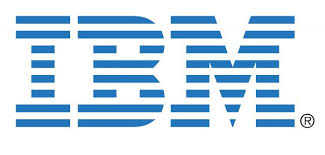Volunteers Help Scientists Identify 70 Chemical Candidates To Be Tested Against COVID-19
By Juan Hindo

Working in a highly collaborative and open effort, scientists have identified 70 virtual compounds to be tested for their capability of inhibiting SARS-CoV2, the virus responsible for COVID-19, hopefully leading to new options for treatment.
What’s remarkable here is that the finding was the result of a massive, volunteer crowdsourcing project taking place in a program that is hosted in the IBM Cloud. Volunteers from all across the globe — mostly, regular people and science enthusiasts alike — are donating power from their computers and smartphones to scientists who need massive processing power to perform virtual experiments.
Even though significant progress is being made toward COVID-19 vaccines and treatments, identification of potential medicines to combat the virus remains critical to address any gaps in vaccine efficacy or distribution, treat patients already infected, or deal with future mutations of the SARS-CoV2 virus.
The discovery process: a successful team effort
In May 2020, IBM’s World Community Grid, hosted on IBM Cloud, partnered with Scripps Research to launch the OpenPandemics-COVID-19 project. The effort uses molecular modeling techniques to look for chemical compounds that can provide the starting point to develop potential treatments for COVID-19. By November 2020, with the help of volunteers’ computers, IBM’s World Community Grid helped Scripps Research identify 70 chemical compounds, from a large collection of 80 million molecule candidates, that are now slated for lab testing. That identification process performed billions of energy calculations to check how well the shape of compounds for a potential treatment “fit” the different viral protein targets when they were digitally “docked” together during a simulation.
OpenPandemics volunteers has so far performed the equivalent of 70,000 years’ worth of computing (in other words, a single-processor PC would need to work that long to perform the computations), completing 168 million computational assignments since May — a rate of about one million daily computational assignments.
Thanks to World Community Grid, running on IBM Cloud, scientists were able to perform the first steps of the research process while their lab was closed because of the pandemic.
Next steps of OpenPandemics COVID-19 project
The screening of chemical compounds that may prove effective against the virus that causes COVID-19 will continue in 2021.
The Scripps team is also creating a fast-response, open source toolkit that will help all scientists quickly perform digital screenings for prospective pandemic treatments in the future.
Dr. Stefano Forli and his lab associates, the scientists behind the discovery
Scripps Research, a leading scientific institute in San Diego, CA, sent most of its personnel home to continue their work remotely due to COVID-19 back in the spring of 2020. For Dr. Stefano Forli and his lab associates at Scripps, this meant not just new ways of working and living, but also an additional research project to help fight the new coronavirus.
Forli is a medicinal chemist with expertise in computer-based research, particularly for HIV/AIDS treatments. At his Scripps-based lab, he leads a multidisciplinary group of scientists who are also experts in gleaning new knowledge from simulated, computer-based experiments. With a little-understood virus spreading rapidly, they needed to screen millions of chemical compounds simultaneously, to quickly identify those that could be potential COVID-19 treatments, and then send the most promising compounds to lab collaborators for testing in record time.
That’s why the Forli Lab and IBM’s World Community Grid, created OpenPandemics – COVID-19. The project aims not only to rapidly find potential COVID-19 treatments, but also to build a research software infrastructure that can help fight future pandemics which will be shared with the entire scientific community.
How to join the initiative
Volunteers can download a safe app from IBM’s World Community Grid, powered by the IBM Cloud, to their Android, PC, Mac or Raspberry Pi devices that crunch numbers for scientists when they are not otherwise in use. It’s an easy and free way to help advance scientific research, and uses an open source platform called BOINC, which orchestrates the flow of applications and data across World Community Grid’s distributed network of computers.
With thousands of non-scientists teaming up, they have already donated the equivalent of tens of thousands of years’ worth of computing.
Join us!

